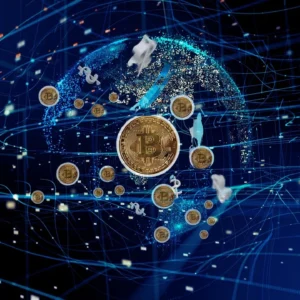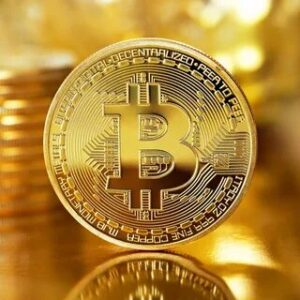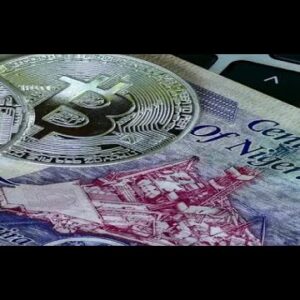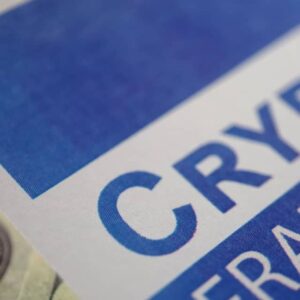
Outline: 
1. Introduction To Blockchain in Investment
- Introduction to Blockchain investment tokenization
- Brief mention of how blockchain is changing investment strategies and asset management.
2. What is Blockchain Investment Tokenization?
- Definition of Blockchain investment tokenization
- Explanation of how tokenization works in the context of blockchain
- Comparison to traditional investment methods
3. The Rise of Digital Securities in the Blockchain Era
- What are digital securities?
- Role of digital securities in the blockchain ecosystem
- Advantages of digital securities over traditional securities
4. The Process of Tokenizing Assets
- How to tokenize real-world assets using blockchain technology
- Steps involved in the tokenization process
- Types of assets that can be tokenized (real estate, commodities, equity, etc.)
5. Blockchain and the Benefits of Asset Tokenization
- A. Increased Liquidity
- How tokenization boosts liquidity for traditionally illiquid assets
- B. Global Accessibility
- How blockchain enables global participation in investment opportunities
- C. Lower Transaction Costs
- Reducing fees associated with asset management and trading
- D. Fractional Ownership
- The concept of fractional ownership enabled by tokenization
6. Blockchain Investment Tokenization: The Regulatory Landscape
- Legal and Regulatory Considerations
- The importance of compliance for tokenized assets
- Key regulatory challenges for blockchain tokenization
- Global Legal Framework for Blockchain Investments
- Examples of countries embracing tokenization and digital securities
- Regulatory approaches across various regions
7. Impact of Blockchain Tokenization on Traditional Investment Models
- Disruption of traditional investment models (private equity, venture capital)
- Blockchain’s role in democratizing investment opportunities
- How tokenization levels the playing field for small investors
8. Blockchain in Real Estate: Revolutionizing Property Investment
- Real Estate Tokenization
- How tokenization is transforming the real estate market
- Benefits of tokenized real estate investments
- Examples of successful blockchain real estate projects
9. Blockchain in Commodities and Precious Metals
- Tokenizing Commodities and Precious Metals
- How blockchain facilitates the tokenization of commodities like gold, oil, and agricultural products
- Benefits of Tokenizing Commodities
- Improved transparency, security, and trade efficiency
10. Blockchain Investment Tokenization in the Stock Market
- Tokenized Stocks and Equity
- How blockchain allows for fractionalized shares in stocks and equity
- How tokenized stock trading can enhance accessibility and trading efficiency
11. Blockchain in the Art Market: Tokenizing Valuable Artwork
- Tokenizing Art and Collectibles
- Blockchain’s impact on the art world, enabling fractional ownership of artworks
- The benefits for collectors, investors, and artists
12. How Blockchain Investment Tokenization is Changing Asset Management
- The role of tokenization in managing diversified portfolios
- How tokenized assets can be incorporated into financial planning and wealth management
13. Future Trends and Innovations in Blockchain Investment Tokenization
- Upcoming innovations in the tokenization process
- How AI and smart contracts will integrate with blockchain for enhanced investment solutions
- Predictions for the future of blockchain tokenization and digital securities
14. The Challenges and Risks of Blockchain Investment Tokenization
- Security and Fraud Risks
- The risks of hacking and fraud in blockchain-based investments
- Volatility
- The volatility associated with tokenized assets and cryptocurrencies
- Market Adoption
- Challenges in convincing traditional financial institutions and investors to adopt blockchain-based systems
15. Conclusion
- Summary of the benefits and opportunities provided by blockchain investment tokenization
- Final thoughts on the future of tokenized investments and their potential to reshape the global investment landscape.
READ MORE: Understanding the Nigerian StocK Market trends in 2025
16. Frequently Asked Questions (FAQs)
1. What is blockchain investment tokenization?
2. How does tokenization benefit investors?
3. What types of assets can be tokenized?
4. What are the regulatory challenges of blockchain tokenization?
5. How can blockchain improve asset management?
Tokenization Revolution: The Future of Blockchain in Investment and the Rise of Digital Securities

1. Introduction
Blockchain investment tokenization is revolutionizing the way assets are traded and invested in. In recent years, the investment landscape has experienced significant shifts, primarily due to the integration of blockchain technology. Through tokenization, blockchain enables the conversion of tangible and intangible assets into digital tokens, making them more accessible and efficient for a global audience.
Tokenization on the blockchain allows assets, from real estate and stocks to fine art and commodities, to be broken down into smaller, tradable units. This creates greater liquidity, improves market accessibility, and reduces costs—fundamentally changing how investors interact with various markets. This post will delve into how Blockchain investment tokenization is shaping the future of asset management, investment opportunities, and financial markets.
2. What is Blockchain Investment Tokenization?
Blockchain investment tokenization refers to the process of converting ownership of real-world assets into digital tokens on a blockchain platform. These tokens represent a share in an asset, such as real estate, stocks, or even collectibles. By using blockchain technology, asset owners can create fractionalized digital tokens that are tradable, secure, and transparent.
Unlike traditional investment methods, tokenization allows assets to be divided into smaller, more accessible parts, which can then be bought and sold on decentralized exchanges. This opens up investment opportunities for individuals who may not have the capital to invest in high-value assets outright. Tokenization uses blockchain’s immutability and security features to provide a reliable, transparent, and frictionless process for investment.
3. The Rise of Digital Securities in the Blockchain Era
As blockchain investment tokenization has become more prevalent, digital securities have emerged as an important innovation in the financial sector. Digital securities are essentially digital representations of traditional securities, such as stocks, bonds, and real estate, that exist on a blockchain.
These digital securities offer a myriad of benefits compared to traditional securities:
- Transparency: Digital securities are stored on a public ledger, making them transparent and easily verifiable.
- Faster Transactions: The use of blockchain ensures faster settlement times compared to traditional stock exchanges, where transactions can take days.
- Reduced Costs: The decentralization of digital securities eliminates intermediaries like brokers, which reduces transaction fees and associated costs.
The transition to digital securities powered by blockchain technology is expected to streamline the investment process and make financial markets more inclusive.
4. The Process of Tokenizing Assets
Tokenizing assets through blockchain is a step-by-step process that allows owners to convert their physical or digital assets into tradable digital tokens. Here’s how it works:
- Asset Selection: The first step in the tokenization process is selecting the asset that will be tokenized. This can range from real estate and fine art to commodities and stocks.
- Asset Valuation: A third-party service often conducts a valuation of the asset to determine its market worth, ensuring that tokenized shares reflect the true value of the underlying asset.
- Issuing Tokens: Once the valuation is completed, the asset is divided into digital tokens that represent fractional ownership of the asset. These tokens are then issued on a blockchain platform.
- Trading Tokens: Investors can then buy, sell, and trade these tokens on blockchain-based exchanges. The blockchain ensures that each transaction is secure, transparent, and immutable.
5. Blockchain and the Benefits of Asset Tokenization
Blockchain investment tokenization brings numerous advantages to both investors and asset owners. Let’s break down the primary benefits:
A. Increased Liquidity
Tokenization can significantly enhance the liquidity of traditionally illiquid assets like real estate, art, and collectibles. By dividing an asset into smaller, tradable units, tokenization makes it possible to trade these assets in a more liquid market. This liquidity is particularly beneficial for investors looking to enter and exit markets quickly without being constrained by the asset’s full value.
B. Global Accessibility
Blockchain removes geographic and economic barriers by enabling global participation in tokenized assets. Investors from anywhere in the world can now access investment opportunities that were previously restricted to specific regions or wealth classes. This is especially important in emerging markets, where access to certain types of investment is limited.
C. Lower Transaction Costs
By eliminating intermediaries like brokers and custodians, blockchain investment tokenization can dramatically reduce the costs associated with asset trading. Traditional investment models involve a network of intermediaries, all of whom take a cut of the transaction fees. With blockchain, transactions occur directly between parties, lowering fees and improving cost-efficiency.
D. Fractional Ownership
Tokenization allows for fractional ownership, where investors can buy smaller portions of an asset. This is particularly advantageous for high-value assets like real estate or luxury goods, which would otherwise be out of reach for most investors. Fractional ownership increases the number of potential investors and democratizes access to wealth-building opportunities.
6. Blockchain Investment Tokenization: The Regulatory Landscape
Despite the clear advantages, the regulatory landscape for blockchain investment tokenization remains complex and challenging. Tokenized assets and digital securities must comply with both local and international laws to ensure legitimacy and investor protection.
Legal and Regulatory Considerations
One of the key challenges is how blockchain-based tokenization interacts with securities laws. Traditional securities, such as stocks and bonds, are heavily regulated by authorities like the U.S. Securities and Exchange Commission (SEC). However, tokenized securities operate in a decentralized and borderless manner, which complicates the regulatory framework.
In many cases, blockchain platforms must integrate compliance features such as Know Your Customer (KYC) and Anti-Money Laundering (AML) requirements to ensure that only eligible investors participate in tokenized asset offerings.
Global Legal Framework for Blockchain Investments
Different countries have taken varying approaches to blockchain investment tokenization. For example, Switzerland has become a global hub for blockchain innovation, embracing clear regulatory guidelines for digital securities. On the other hand, China has imposed strict regulations on cryptocurrency trading, affecting the broader blockchain ecosystem. Navigating this regulatory landscape requires careful consideration of each jurisdiction’s legal requirements.
7. Impact of Blockchain Tokenization on Traditional Investment Models
The tokenization of assets through blockchain is disrupting traditional investment models. Traditionally, investment opportunities were often limited to accredited investors or institutional investors. However, blockchain technology is democratizing access to financial markets by lowering the barriers to entry for retail investors. Now, individuals can access high-value assets through tokenized shares, allowing them to invest in previously inaccessible markets.
8. Blockchain in Real Estate: Revolutionizing Property Investment
The real estate market has been one of the biggest beneficiaries of blockchain tokenization. By allowing property to be divided into smaller, tradable tokens, real estate tokenization enables investors to purchase fractional ownership in properties, making it easier for people to enter the market.
This model improves liquidity in real estate, a market known for its illiquidity. Tokenized real estate investments allow buyers and sellers to trade property interests more efficiently than traditional methods, creating a more dynamic and inclusive market.
9. Blockchain in Commodities and Precious Metals
Tokenizing commodities like gold, oil, and agricultural products is another exciting application of blockchain. By tokenizing these assets, blockchain makes it possible to trade them more efficiently, enhancing transparency and reducing trading costs.
This is especially useful in markets where physical asset trading can be cumbersome, and blockchain’s traceability ensures that the tokenized commodities are backed by the actual physical assets, offering enhanced security and confidence.
10. Blockchain Investment Tokenization in the Stock Market
Blockchain allows for the tokenization of stocks, making it easier for investors to buy fractional shares of companies they would otherwise be unable to invest in. This is particularly valuable in high-priced markets like the stock market, where investors may find it difficult to purchase full shares of companies like Amazon or Tesla.
By breaking down shares into smaller, tradable tokens, blockchain opens up stock market investments to a broader audience.
11. Blockchain in the Art Market: Tokenizing Valuable Artwork
Blockchain is also transforming the art market by enabling the tokenization of art. High-value artworks, which have traditionally been illiquid investments, can now be divided into smaller fractions, allowing investors to own a part of a valuable piece of art.
This also democratizes access to the art market, enabling smaller investors to participate in buying shares of renowned artworks while also providing artists with new revenue streams.
12. How Blockchain Investment Tokenization is Changing Asset Management
Tokenization provides a new way to manage portfolios by making a wide range of asset types available for fractional ownership. This helps asset managers diversify their portfolios by incorporating tokenized real estate, stocks, commodities, and more into a single, cohesive strategy.
For individual investors, tokenized portfolios allow them to invest in a wide range of assets with lower capital requirements.
13. Future Trends and Innovations in Blockchain Investment Tokenization
The future of blockchain investment tokenization looks incredibly promising. With the growing adoption of DeFi (decentralized finance) and smart contracts, blockchain will become more efficient, secure, and integrated with other financial systems.
Looking ahead, tokenized assets will likely become even more mainstream, with AI and machine learning playing a key role in automating and improving the tokenization process. Decentralized autonomous organizations (DAOs) could also play a significant role in the governance of tokenized assets.
14. The Challenges and Risks of Blockchain Investment Tokenization
Despite its benefits, tokenization presents several challenges:
- Security Risks: As blockchain networks grow, they may become targets for hackers and malicious actors.
- Market Volatility: The prices of tokenized assets can fluctuate wildly, leading to investor uncertainty.
- Adoption Barriers: Many traditional financial institutions remain hesitant to adopt blockchain technology due to its complexity and regulatory concerns.
READ MORE: Blockchain’s Impact on Financial Transparency: A New Era for Financial Reporting
15. Conclusion
Blockchain investment tokenization is poised to revolutionize the global investment landscape by offering unprecedented liquidity, accessibility, and efficiency. By allowing assets to be divided into smaller, tradable units, tokenization makes it easier for individuals to participate in markets that were previously out of reach. While challenges remain, the future of blockchain in investment looks incredibly promising as technology, regulations, and adoption continue to evolve.
16. Frequently Asked Questions (FAQs)
1. What is blockchain investment tokenization?
Blockchain investment tokenization is the process of converting real-world assets into digital tokens on a blockchain, enabling fractional ownership and easier trading.
2. How does tokenization benefit investors?
Tokenization provides investors with the opportunity to own fractions of high-value assets, improving liquidity, lowering barriers to entry, and offering broader market access.
3. What types of assets can be tokenized?
Assets such as real estate, stocks, commodities, fine art, and even collectibles can be tokenized using blockchain technology.
4. What are the regulatory challenges of blockchain tokenization?
Regulatory challenges include navigating different countries’ laws, ensuring compliance with securities regulations, and ensuring that tokenized assets are legally enforceable.
5. How can blockchain improve asset management?
Blockchain allows asset managers to create diversified portfolios with fractionalized tokenized assets, offering better liquidity and investment flexibiliy.






